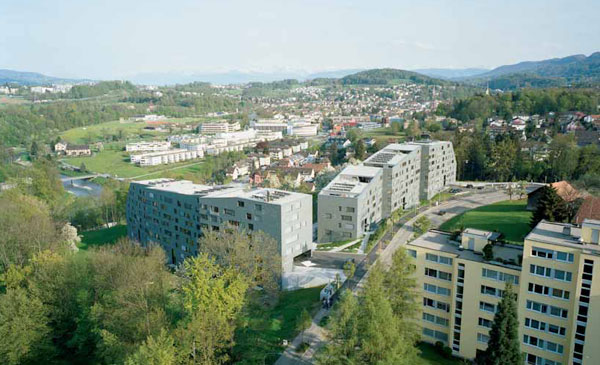Model Case: Switzerland
“Some achievements reveal practiced and competent artisanry, and occasionally a real delicacy is created, but the future will hardly be a sum of those achievements prone to expressing their limitations more strongly than their libido.” With these words, Swiss art historian Kurt W. Forster in 1997 summed up architecture in his home country. Despite its lack of libido and arguably precisely because of its limitations: Swiss architecture is respected worldwide, with envious scrutiny from the outside fixed on Swiss residential construction in particular. Whoever seeks to explain the high quality of architecture in the Alpine country need only look as far as money: Switzerland is wealthy. But there are other reasons as well, for example the following seven:
Public Authorities Fund Quality Residential Buildings
Zurich is among the most popular cities in the world, which is why a shortage of apartments is prevalent here. At the turn of the millennium, the quota of empty apartments at under 150 was below one per mille. Especially large apartments were, and still are, scarce: many families end up leaving the city for the less expensive suburbs, thereby contributing to a progressive urban sprawl. Since 1998 the municipal government has been investing in the construction of housing, hence turning Zurich into the focal hub of Swiss residential building. Public lots are leased to cooperative building associations for the construction of houses or housing developments with family apartments.
Young Architects Are Likewise Involved
In return, the cooperative building associations are required to hold architecture competitions, usually limited in scope, but where the participation of young architecture firms is encouraged. In this way, a whole series of residential buildings have emerged in Zurich that often represent the respective architect’s first large job, for example the Hegianwandweg development by EM2N (fig. 2), the Leimbach development by Pool Architekten (fig. 1), or—presently under construction— the A-Park development by Baumann Roserens, the residential housing complex Grünwald, called the “Ringling” project, by Schneider Studer Primas, and many more. Requirement is that these young architects have been trained not only to design but also to build. Particularly at both Swiss Federal Institutes of Technology (EPF Lausanne and ETH Zurich), but also in recent years at the new Accademia di architettura in Mendrisio, studentss are tought not only to think conceptually but also to structurally implement their ideas. ...
Axel Simon
for entire text see catalogue
 |
| Abb. 1 Wohnüberbauung Leimbachstrasse, Zürich; Pool Architekten; Foto: © Andrea Helbling/arazebra, Zürich |
 |
| Abb. 2 Hegianwandweg Wohnbau, Zürich; EM2N, Mathias Müller, Daniel Niggli; Foto: © Hannes Henz, Zürich // Abb. 3 MFH Wiesenstrasse Winterthur; Knapkiewicz & Fickert; Foto: © Heinrich Helfenstein, Zürich |

